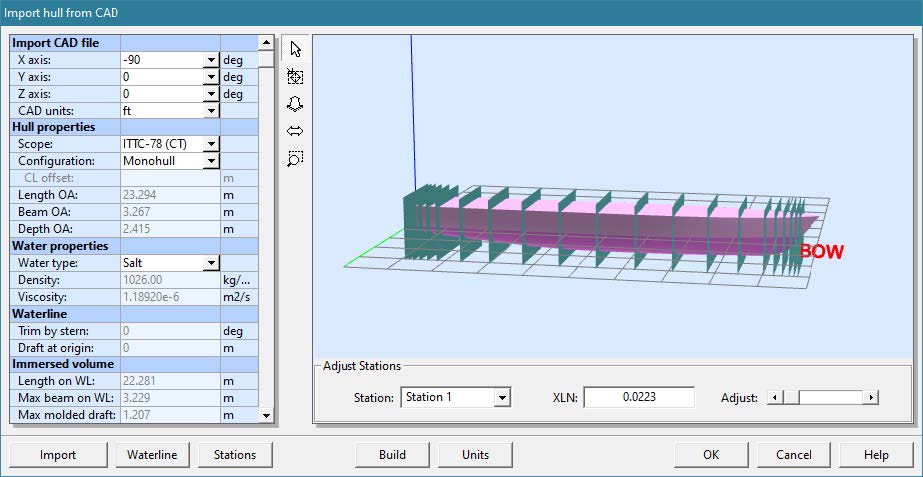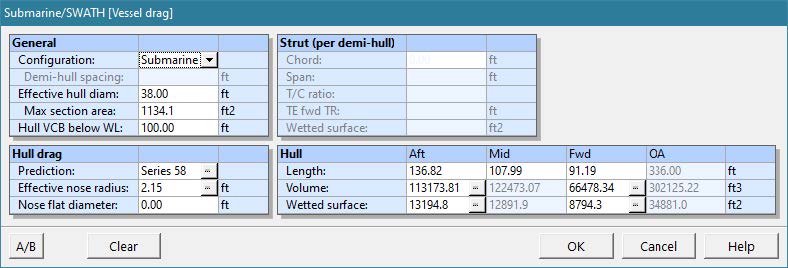New features for improved Vessel-Propulsor-Drive system simulation
Development in 2020 for HydroComp NavCad offers new features for all three parts of NavCad’s Vessel-Propulsor-Drive system simulation, as well as an improved user experience.
Vessel definition and performance prediction The Hull CAD Import feature introduced in 2019 has been further developed for improved user feedback and process efficiency. It also is a key piece to a more efficient design workflow when coupled with hull CAD tools, such as with the new NavCad links from Orca3D and PROLINES.

Vessel resistance and hull-propulsor predictions have been enhanced, including a new hull loading parameter for evaluation of and appropriate planing hull method, updates to the Analytical Distributed Volume Method (ADVM), and prediction of form factor estimates.
New Submarine/SWATH prediction and data definition
Data definition for Submarine/SWATH prediction in NavCad has been updated for easier definition from CAD models and early-stage conceptual parametric geometries. New prediction capabilities include updated resistance and hull-propulsor prediction, as well as a “nose flat” pressure drag model developed from an in-house R&D project.

Performance prediction and definition for contemporary propellers
Contemporary propellers often do not match the available propeller systematic series performance models. New features for NavCad 2020 help ensure that the deliverable in- the-water performance of contemporary propellers can be reliably predicted, including definition and performance of propellers with face camber ratio (alternatively known as “progressive pitch” propellers) and an updated prediction for the incidence of face cavitation when running in oblique flow.

New electric motor Drive module coming in late 2020
A major update coming in late 2020 is a new module for electric motors as the prime mover of NavCad’s Drive component. Development includes consideration of AC and DC motors, with particular development for easy user definition of standard motor types, such as the popular styles of permanent magnet synchronous motors (PMSM) found in UVs and other submersibles. A new model for partial load efficiency and current draw will provide engineers and designers with a critical missing piece when conducting trade-off studies, evaluation and validation of trial data, or calculations of operational battery budget.
About HydroComp NavCad
For additional information, click to: www.hydrocompinc.com/solutions/navcad
About HydroComp
Since 1984, HydroComp has been a leader in providing hydrodynamic software and services for resistance and propulsion prediction, propeller sizing and design, and forensic performance analysis. Through its unique array of software packages and services, HydroComp now serves over 1200 naval architectural design firms, shipyards, yacht owners, ship operators, propeller designers, universities and militaries around the globe.
For more information, please contact:
Jill Aaron, Managing Director
jill.aaron@hydrocompinc.com
HydroComp, Inc. 15 Newmarket Road
Suite 2 Durham, NH 03824 US
+1 603-868-3344
www.hydrocompinc.com
